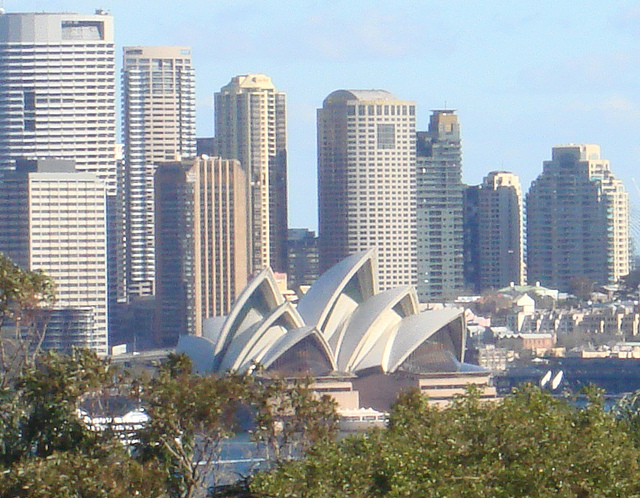 Watch This Video
Watch This VideoRecent Australian political discourse, sacking of government officials and changing of department names shows that Oz - like many others - is coming to grips with an increasingly globalized world. Recent events suggest a shift from embracing the concept of multiculturalism in Australia to a focus on cultural unity.
Australia, like the United States, is a country founded on immigration. Similarly, its population began as largely Anglo and Irish in background, owing to its status as a penal colony for the British Empire in the late 18th century.
However, much like recent experiences in the United Kingdom, Ireland, France, Germany and the Netherlands, Australia is taking in more and more people of diverse cultural backgrounds. As in other countries, public and government reaction to increased immigration is not always positive, irrespective of any proven economic gains.
Today's current events concerning Australian immigration are not new in historical context. The country has dealt with questions of immigration and multiculturalism for the length of its history, swinging from a policy of exclusion to embracing other cultures and values ... to today's political and cultural debate about what it means to be Australian.
White Australia
Over the course of its early history as a federation until the latter part of the 20th century, restrictive immigration policies were in place to keep out undesirable ethnic groups. These measures are collectively referred to as the "White Australia" policy.
The Immigration Restriction Act of 1901 was designed to restrict immigration to those of European descent by making applicants take a "dictation test" in any European language the immigration official saw fit. It also aimed to exclude immigrants based on health, economic standing, or if they were contracted for manual labor.
During this time, Australia wasn't alone in its efforts to filter certain ethnic groups out. British dominions in the 19th and early 20th century, as well as the United States, had similar policies in place.
During World War II the "White Australia" policies were further reinforced, with Prime Minister John Curtin stating that "this country shall remain forever the home of the descendants of those people who came here in peace in order to establish in the South Seas an outpost of the British race."
Unlocking the gates
At the end of the war, Arthur Calwell, the first immigration minister, sought to deport refugees who had married Australians, causing an outcry. This led to the 1949 decision by Harold Holt, Immigration Minister at the time, to allow 800 refugees - including those married to Australians - to stay in the country. This was the first step toward liberalizing Australia's immigration policy.
Some further steps were taken in 1957 when non-Europeans who had been residing in the country for 15 years were allowed to seek citizenship. The Migration Act of 1958 simplified entry requirements and abolished the dictation test.
In 1966, after a review of immigration policies by then Immigration Minister Hubert Opperman, changes were made to policy so that those who wanted to make Australia their home could do so based on criteria such as their qualifications and ability to integrate. At the same time, non-European temporary residents not required to leave Australia could become permanent residents after five years.
Finally, in 1973, the Whitlam government legislated that all migrants of any ethnic origin would be eligible for citizenship after three years of permanent residence and mandated that race would not play a role in selecting migrants in overseas offices. It also ratified all international agreements with regard to race and immigration.
Soon after, the Fraser government in the late 1970s put in place frameworks that increased the number of immigrants from non-European countries.
Australia today
The doctrine of multiculturalism - defined as encouraging cultural groups to retain their language, beliefs and values - seems to be a dying creed in Australia after being embraced for so many years.
Presently, almost 25% of the Australian population was born overseas, more than in any other nation except Israel. In 2005-06, 131,593 migrants were granted permanent residence or arrived in the country and were entitled to stay permanently.
Those of European descent still make up the largest portion of arrivals to Australia, with the UK taking the lead in 2005-06, followed by New Zealand.
However, the number of migrants from the UK is declining. Meanwhile, those of non-European descent are on the rise, with some of the fastest growing migrant groups hailing from the Middle East and Africa.
Recently there has been a lot of discourse in the media and Australia's political stage concerning the need for those who migrate to Australia to take up the cultural values and language of the country in order to better integrate into society. There is a lot of worry by conservative voices who feel that certain migrant groups such as Muslims will cause discord in Australian society as they grow larger.
The recent name-change of The Department of Immigration and Multicultural Affairs to The Department of Immigration and Citizenship, coupled with policy shifts in immigration procedures, gives a distinct impression of the government's new stand on the issue of multiculturalism.
A new citizenship test has been proposed that aims to test an applicant's knowledge of the English language and Australian cultural values. While not in the same league as the dictation test of the early 20th century, some - mostly Liberal voices in government - see it as another way to exclude those whose cultural background is not in line with Australian norms.
Prime Minister John Howard's response to such criticisms is that people who have been living in Australia for four years - the pre-requisite to gaining citizenship - should know English and that it is not unreasonable to test them. He used the term "mateship," a colloquial word, in an attempt to describe the unique sense of community, Australian-style, that newcomers will need to adjust to.
The future
In any case, the ability for Australia to reconcile with its various cultural groups and its identity as a nation will decide the country's place as a desirable destination for migrants.
Australia has a need to fill highly skilled jobs as exemplified by its skilled migrant program, the premium subclass 457 visa. To keep itself competitive in the global market, taking in immigrants from around the world - not just from European countries - is paramount.
The Howard government will be coming up for election soon, and how well he does in his bid for re-election will be a good indicator for Australia's desire to welcome those from abroad.
Related:
• Skilled migration to Australia at record levels• More Australians are emigrating while immigration increases
• Skilled Australian immigrants represent significant "brain gain"
• Australian immigration required for economy and population shortfall
• Australia - Electronic Travel Authority fee-waiver for Subclass 676 visa
• Australian citizenship test gets new study guide
• Ageing Australian population fears immigration less
• Australian law exempts overseas income from taxes for visa holders
• More and more Brits choosing Australia
• Australia's Vanstone sacked as Immigration Minister, other changes




